this is the blog for a cooperative garden/tiny farm in the maritime pacific northwest.
Don't wanna be here? Send us removal request.
Text

Started walking onions & 'Elka White' breadseed popped poppies today-
Walking onions are a type of perennial multiplier onions that do pretty well up here and we'll be using mostly for green onions. Unlike most onions which are propagated by seed, these guys make little clusters of bulblets at the top of their stalks where a flower head usually would be. They're called 'walking' because the stalk eventually falls over, and the bulblets root where they land.
'Elka White' is supposed to be one of the best tasting breadseed poppies out there, and makes a really tasty seed butter. They'll start growing this fall, and then bloom next year. I'm actually hoping to grow two kinds of breadseed poppy this year, and by starting the second type next spring in hoping to give the Elka poppies enough of a head start that they'll be done before the other variety starts blooming to prevent cross pollination. We'll see!
Also brought in more plant matter to help build up the organic matter in the soil, along with mycorrhizal & bacterial populations:

#organic gardening#permaculture#gardening#no till#no dig#grow your own#sustainable gardening#plant based permaculture#vegan permaculture
0 notes
Text
Spent some time in the garden today, it's coming together nicely.
Brought some compost & grass clippings to help build up the organic matter:
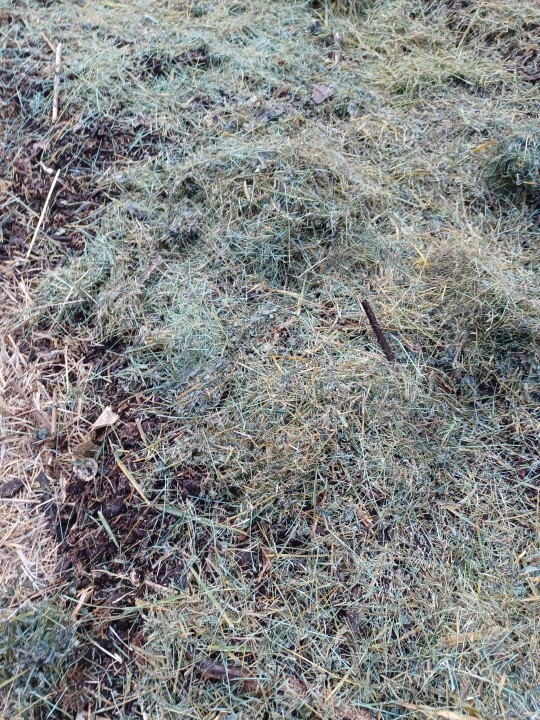
We'll keep layering leaves and clippings as we get them, but I did start sowing some seeds in one area.
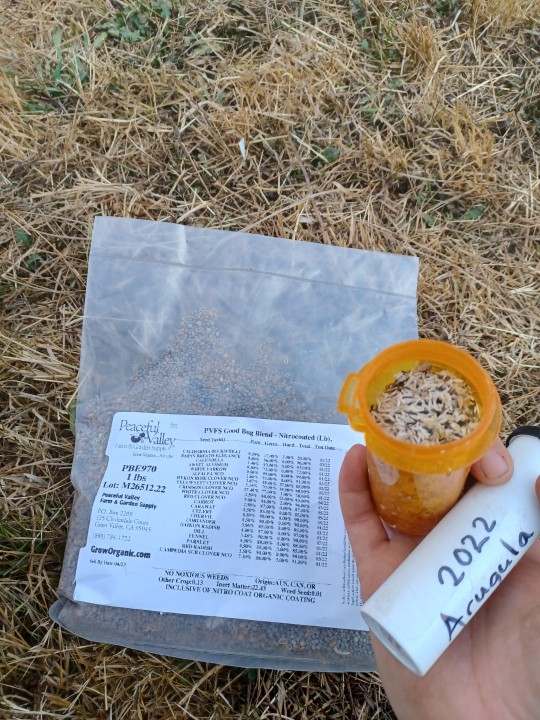
I saved a lot of seeds this summer, so I was able to take the calculated risk of sowing a bunch now, even though it's kinda late and this is less than ideal conditions. I was able to sow some kale, lettuce, arugula, and mustard greens. If you know about mycorrhizae, than you probably know that brassicas are one of the few families that don't use mycorrhizae- which is why 3 out of the 4 I mentioned are brassicas. They're getting planted straight into compost as the first generation because they'll be just fine even without a good mycorrhizal community.
I also sowed a beneficial bug mix, extra cover, and some self-heal in what in the future will be walk ways.
After that, I did a bit of work on the native plant area, pulling and cutting off invasive species. Here's some of them:

Two kinds of invasive blackberry & scotch broom. That area has a lot of salal, evergreen huckleberry, and Doug fir coming up. I'm going to maintain part of it as a praire environment, but encourage trees where they already are. They're far enough away from the main garden area that they won't shade it for many years.
Here's a look over some of the area, and it demonstrates that it looks a bit funky at the moment:
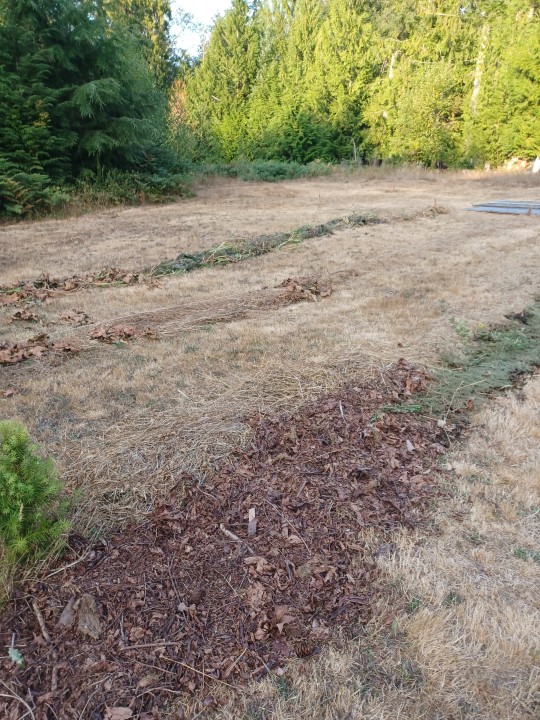
It's a mishmash of different mulch-like garden debris, but we'll keep adding until winter sets in. By spring it'll be well decomposed, and we'll have a much richer soil to plant in.
#gardening#no dig#sheet mulching#no till#permaculture#sustainable gardening#organic gardening#plant based permaculture#vegan permaculture
2 notes
·
View notes
Text
This is what we're starting with:
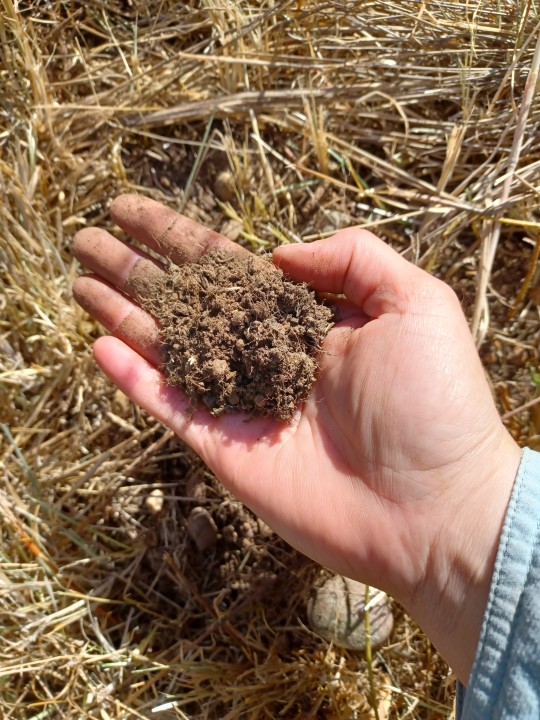
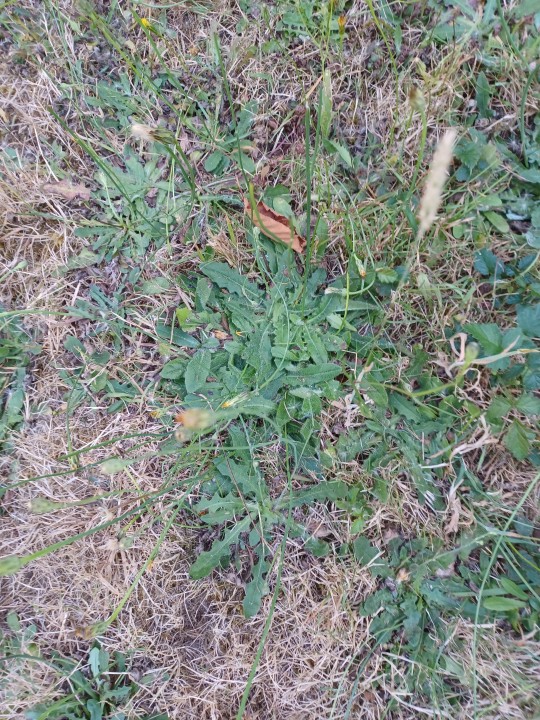
As you can see, the soil doesn't have much organic matter, and it is rather sandy, without aggregates. The plants that are here right now are mostly non-native grasses & catsear, with some hardy natives like selfheal.
We're going to start by deep mulching (often called sheet mulching or lasagna gardening) this fall, with an eye towards planting in the spring. We will plant some things this fall, mostly leafy greens & raspberries once they've gone dormant. The deep mulching will add lots of organic matter, support soil life (which in turn supports plant life), kill off the grass, and just generally improve everything.
One of the big things we'll be doing is interplanting, with a wide range of species. Some to help support mycorrhizae, some to make it harder for insect pest to find our crops, and some to provide habitat for beneficial insects. Things like white clover, marigolds, and yarrow. I don't have pictures to post of that yet, so you'll just have to imagine!
2 notes
·
View notes
Text
I'm really excited about this garden, because while I grew up on a small organic farm, I've learned a lot in the years since I left home. A lot about mycorrhizae, soil bacteria, interplanting, insectary plants, and passive water catchment techniques, and I'm really excited to try them on a bigger scale than my back yard.
So let's look at a few of the design guidelines I have for this place.
1. Use practices that encourage mycorrhizae & other soil microbiota. In practice, this means we will not dig in the soil if at all possible, we will keep the soil covered with mulches (including living mulches), and we will keep healthy roots in the soil year round (either by having a living mulch or biennial & perennial crops). We will also not be using concentrated forms of fertilizer, such as inorganic, bone meal, guano, etc, as these have been shown to disrupt the relationship between plants & mycorrhizae.
2. With few exceptions, crops will be inter-planted, usually with plants that have been shown to reduce damage to crops, improve the health of the crops, fix nitrogen, or support native insect species.
3. There will be a lot of insectary plants, and large areas for native plants to grow. We will encourage species that support native pollenators & birds, discourage invasive species, and work to make sure our garden benefits the surrounding ecosystem. We will not be using pesticides, herbicides, or inorganic fertilizers.
4. We will be using passive rainwater catchment practices to retain as much soil moisture as possible and reduce irrigation as much as possible. This will look like the use of mulches, incorporating as much organic matter as possible, and possibly the construction of swales.
If you want some resources on these matters, here's a reading list, ranging from memoirs with good info to books with many case studies
The One-Straw Revolution: An Introduction to Natural Farming, by Masanobu Fukuoka
The Ruth Stout No Work Garden Book, by, you guessed it, Ruth Stout
The Complete Guide to Restoring Your Soil, by Dale Strickler
Finding the Mother Tree, by Suzanne Simard
Mycelium Running, Paul Stamets
1 note
·
View note